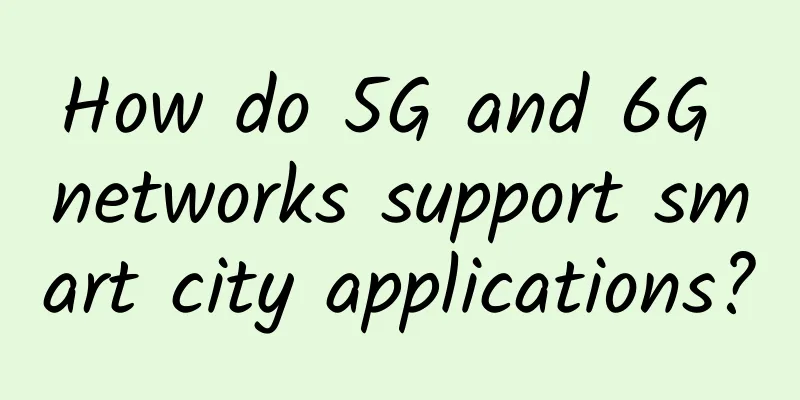Wu Hequan, Academician of the Chinese Academy of Engineering: IPv6 will become the carrier platform of the new generation of IT and will develop in parallel with computing power network

|
The 2021 China Mobile Global Partner Conference with the theme of "Data is Everything, Intelligent Computing for the Future" kicked off in Guangzhou. At the main forum this morning, Wu Hequan, an academician of the Chinese Academy of Engineering, delivered a speech entitled "IPv6 Helps Build a Computing Service-Centered Network". In his speech, he pointed out: "The new era of IPv6 coincides with the parallel development of new-generation information technologies such as the Internet of Things, big data, cloud computing, blockchain, artificial intelligence and 5G. IPv6 has become the bearer platform for the new-generation IT and unified the bearer of cloud, network, edge and terminal. It will play an important role in cloud-network integration and multi-cloud collaboration." Wu Hequan emphasized that at the same time, computing power networks have posed many challenges to IPv6. IPv6 needs to continue to innovate in deterministic wide area networks, variable-length IP addresses, network security, etc. IPv6 will develop in parallel with computing power networks. Cloud business development requires a computing networkAccording to data released by the Ministry of Industry and Information Technology, telecom operators' cloud computing business revenue increased by 85.8% in 2020 over the previous year. By the first three quarters of 2021, telecom operators' cloud computing business revenue increased by 94.8% over the same period, an astonishing growth rate. Wu Hequan said that cloud services require not only communication connections, but also highly reliable, low-cost, and flexible computing resources. In order to adapt to the development of cloud services, it is necessary to build a computing network. In order to realize the perception, interconnection and coordinated scheduling of ubiquitous computing and services, the computing network architecture system can be divided into five functional modules from the perspective of logical functions: computing service layer, computing platform layer, computing resource layer, computing routing layer and network resource layer. Based on the ubiquitous computing resources of the network, the computing platform layer completes the abstraction, modeling, control and management of computing resources, and notifies the computing routing layer through the computing notification module. The computing routing layer comprehensively considers user needs, network resource status and computing resource status, and schedules service applications to appropriate nodes to achieve optimal resource utilization and ensure the ultimate user experience. According to reports, the computing power network includes many technologies, including delay-sensitive network technology, deterministic network technology, network function virtualization, as well as computing-first network, telecommunications trusted blockchain, IPv6 and IPv6-based segment routing SRv6, etc. IPv6 unified cloud network edge bearerIn Wu Hequan's view, IPv6 and the segmented routing SRv6 technology based on IPv6 are of great importance. APN6 is application-aware based on IPv6. The traditional IP header only contains basic information for routing, such as the source and destination addresses. The network cannot identify the type of service and service level (SLA) requirements carried by the IP packet. Network planning usually adopts a light load mode (30-40%), with low resource utilization. The network pipeline that is insensitive to applications makes it difficult for operators to provide differentiated services and refined management. Further development of IPv6 frame extension headers contains more application information, which is transmitted through the device forwarding plane and can be processed by nodes along the way, reducing the impact of interactions between controllers. In the future, IPv6 extension headers can be used to embed the attributes of the data they carry to support the management of cross-border data flows. From the perspective of IPv6 flow monitoring, the traditional monitoring method uses an indirect test method of sending simulated monitoring messages, which cannot guarantee that the simulated messages are consistent with the real service path, and the service packet loss monitoring accuracy can only reach 10-3. Flow monitoring technology does not require external probes and carries OAM in user messages. The processing node collects and cares for data based on the OAM instruction information in the message. SRv6 supports cross-network intelligent deployment and operation and maintenanceSRv6 can provide network slicing to support specific virtual network services. SRv6 uses the IPv6 extension header SRH to push explicit routes and continuously update the destination address through the nodes in the path to complete hop-by-hop forwarding. SRv6 Policy has a Color attribute. The controller colors different customers and service flows and marks the service level requirements of different applications. The head node matches the service flow coloring according to the service policy issued by the controller, completes network path planning that meets the service SLA, and supports deterministic services. At present, the SRv6 header overhead is too large. This is mainly because the base station backhaul traffic needs to pass through the metropolitan area network and the backbone network. The end-to-end SR tunnel can reach 8 hops or more, and the SID length corresponding to each hop is 128 bits. The 8-layer SID generates an SRH of 128 bytes, while the average payload is only 256 bytes, which is inefficient and has a large delay. The length of the 8-layer SRv6 SID is equivalent to the depth of the 32-layer MPLS label, which exceeds the processing capacity of the current network core. IPv6 in the SRv6 domain is usually assigned the same prefix, and the number of routers in the operator's bearer network generally does not exceed 1,000. The number of representation nodes and the number of adjacent labels are limited, and the SRv6 header can be compressed. It is reported that Chinese enterprises took the lead in proposing the G-SRv6 solution in IETF. With the use of innovative technologies such as compressed redundant prefixes and two-dimensional pointer positioning, the SRH list can contain both coded 128-bit SIDs and compressed G-SIDs. The control plane indicates the compressed G-SID, and G-SRv6 can work with the SRv6 full SID mixed scenario. There is no need to modify the existing address planning and routing planning, and the existing network equipment can be supported by software upgrades, inheriting the SRv6 network programming capabilities. For the needs of external connection of government and enterprise networks, we can provide low-latency dedicated line products and network slicing according to the application type, and also provide large bandwidth that is not sensitive to latency. We can also select the corresponding WAN and the path that meets the cloud needs based on the application information and the location of the cloud. Based on the information security representation in the application information, data traffic can be forwarded to the local cloud and the public cloud to ensure that internal data does not leave the enterprise. We can provide value-added services on demand, such as requiring Internet traffic to pass through a path with firewalls and intrusion detection, and video conferencing traffic to pass through WAN acceleration, etc. Wu Hequan added that SRv6 supports cross-network intelligent activation and operation and maintenance. The intent engine translates business intent into network language and simulates network design and planning. The analysis engine collects and analyzes user traffic and performance data through real-time telemetry. The execution engine converts network design and planning into specific network commands and enables network devices to automatically execute them through standard interfaces. Based on the analysis engine, the intelligent engine uses AI and a continuously upgraded experience library to provide risk predictions and processing suggestions, or directly feeds back to the intent engine to achieve automatic network optimization. Wu Hequan said that the computing power network of the future will face many customer demands and often need to provide these customers with targeted services. In this way, the intent engine can be opened to customers. Customers do not need to know the specific deployment of the operator's network and can program slice channels like using the cloud. Multiple networks are like one network, with online orders, hundreds of parameters, daily activation, agreed operation and maintenance, and visible tenant SLA. He emphasized that in the era of cloud-network integration and multi-cloud collaboration, if there are no collaborative measures, even with multiple clouds, the effect will be poor. Therefore, the network must not only quickly establish communication connections that meet customer bandwidth and latency requirements, but also provide customers with low-cost, high-reliability, and high-security computing services with flexible scheduling capabilities. It is necessary to optimize the collaboration of cloud, network, edge, and end, and evolve from the existing network architecture to a network architecture centered on computing services to truly achieve cloud-network integration. |
<<: Today, China’s 5G is two years old!
>>: Let’s talk about deterministic networks
Recommend
Ethernet vs. WiFi: A Comparison of Internet Connection Technologies
The world is generally moving from wired to wirel...
The national 5G construction target for 2020 was completed ahead of schedule. These places are exemplary
According to the statistics of the Ministry of In...
Qualcomm, Ericsson and OPPO achieve Europe's first commercial 5G SA network
According to foreign media reports, OPPO, Ericsso...
Special offer of $46.6/year package for restocking, optional CN2 GIA (DC6/DC9)/Japan SoftBank, etc.
Bandwagonhost restocked its first special annual ...
SpartanHost Seattle 20% off VPS restock, Dallas regular/large hard drive VPS restock
SpartanHost is currently restocking some packages...
How to use the Shodan search engine to diagnose vulnerabilities?
The Shodan search engine allows users to find spe...
Akamai Releases 2021 Annual Sustainability Report
March 14, 2022 - Akamai Technologies, Inc. (Akama...
Ethernet IP: Unlocking the power of high-speed data transmission
Ethernet IP has revolutionized the world of netwo...
DirectAdmin (DA) latest installation tutorial (2020)
I haven't installed a panel for several years...
At Huawei's annual report conference, Xu Zhijun said that "the US government is destroying the global technology ecosystem"
On March 31, Huawei released its 2019 annual repo...
The three major operators announced this new regulation, and old users said: It is becoming more and more humane!
With the rapid development of science and technol...
Huawei HC releases AIOps series cloud services to enable intelligent transformation of new infrastructure operations and maintenance
[51CTO.com original article] On September 25, 202...
If you understand long-distance relationships, you will understand how to configure switches.
We have explained the configuration of switches m...
Global IT spending to reach $4.1 trillion in 2021, exceeding estimates
[[391876]] Recently, market research firm Gartner...
Infinitely faster than Protocol Buffers, Cap'n Proto 1.0 is finally released after ten years of open source
Cap'n Proto is an extremely fast data exchang...



![[Black Friday] ExtraVM: 50% off VPS with 2GB or more memory, 1Gbps unlimited traffic, data centers in Los Angeles/Dallas/Netherlands](/upload/images/67cabcd3c3a84.webp)





